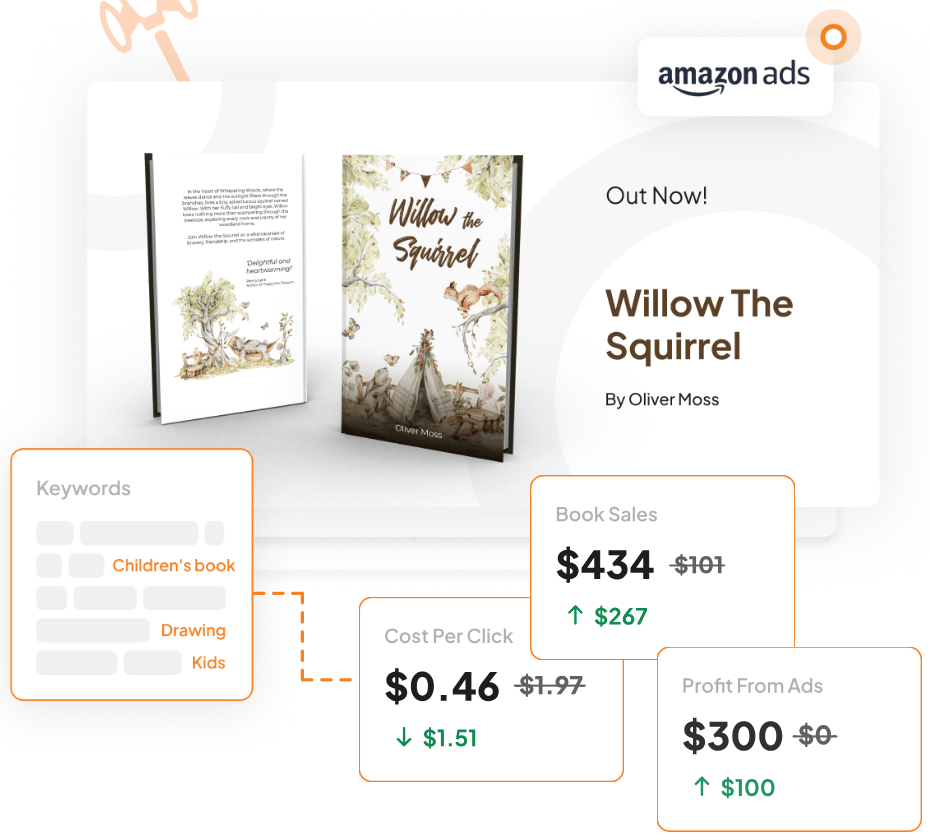Have you ever pondered the profound power of guilt in storytelling? It’s a complex emotion that can turn a simple narrative into a tapestry of emotional depth and resonance. Imagine your readers, not just observing your characters, but feeling their struggles, their remorse, and their need for redemption.
Guilt, when wielded effectively, can be the secret ingredient that transforms your story from mundane to memorable. This blog post will guide you through seven guilt-writing techniques that will add layers of complexity and authenticity to your storytelling.
Understanding Guilt in Storytelling
Guilt is a multifaceted emotion, often intertwined with regret, shame, and the desire for atonement. In literature, it serves as a powerful tool for character development and plot progression.
By understanding its nuances, writers can craft narratives that resonate deeply with readers, making them reflect on their own experiences and emotions.
Defining Guilt and Its Role in Fiction
In fiction, guilt can act as a catalyst for change. It’s that whisper in the back of a character’s mind, urging them to make amends or face their fears.
Characters burdened with guilt often embark on journeys of self-discovery, revealing their deepest flaws and strengths. This emotional turmoil can create a compelling narrative arc that keeps readers engaged.
Consider using guilt as a driving force for your character’s actions. By exploring their internal conflicts, you can create a richer, more relatable protagonist. Allow their guilt to influence their decisions, leading to unexpected plot twists and deeper emotional connections with your audience.
Exploring Different Types of Guilt
Guilt can manifest in various forms, each with its unique impact on a character’s psyche. From survivor’s guilt to parental guilt, these emotions can shape a character’s motivations and relationships. Understanding these different types can help you tailor your narrative to explore complex themes and character dynamics.
For instance, survivor’s guilt can lead a character to question their worthiness, while parental guilt might drive them to overcompensate in other areas of life. Recognizing these distinctions allows you to create multidimensional characters who resonate with readers on a personal level.

The Power of Guilt-Writing Techniques
Integrating guilt into your storytelling can unlock a treasure trove of narrative possibilities. By employing specific techniques, you can evoke empathy, drive character development, and set the stage for transformative storytelling. Let’s delve into seven potent techniques that harness the power of guilt.
Technique 1: Emotion Memory for Authenticity
Emotion memory, a technique borrowed from method acting, involves drawing upon your own experiences to convey authentic emotions in your characters. By tapping into your personal feelings of guilt, you can create scenes that are vivid and genuine, allowing readers to connect more deeply with your story.
Imagine a character standing in the aftermath of a decision they regret. By recalling a time when you felt similar remorse, you can describe their physical sensations and internal dialogue with greater authenticity. This technique not only enhances realism but also fosters a stronger emotional bond between the reader and the character.
Technique 2: Character Contradictions and Complexity
Characters are most compelling when they embody contradictions. A character who feels guilt yet continues down a destructive path can intrigue readers, prompting them to explore the reasons behind such behavior. This complexity adds depth to your narrative, encouraging readers to empathize with even the most flawed characters.
For example, a character might feel intense guilt for abandoning a loved one, yet their fear of rejection keeps them from seeking reconciliation. This internal conflict can drive the plot forward, creating tension and drama that captivates your audience.
Feeling lost with your debut novel?
Fiverr Pro connects you with expert editors, designers, and marketers – everything you need to get your book ready for success!

Technique 3: The Impact of Physical Reactions
Guilt often manifests physically, providing a visceral way to show rather than tell your character’s emotional state. Describing subtle cues like a racing heart, sweaty palms, or averted eyes can vividly convey their inner turmoil. These physical reactions help readers visualize the character’s struggle, enhancing the emotional impact of your story.
Incorporate physical descriptions to complement your character’s internal monologue. This dual approach can create a richer, more immersive experience for your readers, allowing them to feel the character’s guilt as if it were their own.
Technique 4: Use of Internal Dialogue and Thoughts
Internal dialogue is a powerful tool for exploring a character’s guilt. By giving readers access to a character’s thoughts, you can reveal their deepest fears and regrets. This technique allows you to delve into the character’s psyche, offering insights into their motivations and struggles.
Consider a scene where a character reflects on a past mistake. Their internal dialogue might oscillate between self-blame and justification, illustrating the complexity of their emotions. This introspection can add layers to your narrative, inviting readers to engage with the character’s journey on a deeper level.

Technique 5: Setting the Atmosphere of Guilt
The setting can play a crucial role in amplifying a character’s guilt. A dimly lit room, a stormy night, or a deserted street can mirror the character’s emotional state, reinforcing the weight of their guilt. By carefully choosing your setting, you can create a mood that resonates with the character’s internal conflict.
For instance, a character haunted by guilt might find themselves in a room filled with reminders of their past actions. The oppressive atmosphere can heighten their sense of remorse, drawing readers into the character’s emotional world.
Technique 6: Employing Symbolism and Metaphor
Symbolism and metaphor are effective ways to represent guilt without explicitly naming it. A cracked mirror, a wilting flower, or a broken clock can symbolize a character’s fractured psyche or the passage of time since their wrongdoing. These literary devices add depth to your storytelling, encouraging readers to interpret the underlying meaning.
Experiment with symbolism to convey your character’s guilt subtly. This approach allows readers to uncover hidden layers within your narrative, enhancing their engagement and emotional investment in the story.
Technique 7: Crafting Relatable Characters with Flaws
Flawed characters are inherently relatable, and guilt often stems from these imperfections. By embracing your character’s flaws, you can create a more authentic and engaging narrative. Readers are drawn to characters who reflect their own struggles, making them more likely to invest emotionally in the story.
Consider a protagonist who grapples with guilt over a failed relationship. Their journey toward redemption and self-acceptance can resonate with readers who have faced similar challenges, creating a powerful connection between the character and the audience.
No marketing platform? No social following? No problem!
Publisher Rocket helps you market your debut novel like a pro.
It’s a gamechanger for debut authors – try it today!


Guilt and Emotional Depth in Writing
Guilt is a gateway to emotional depth, allowing writers to craft stories that linger in the minds of readers long after the last page is turned. By weaving guilt into your narrative, you can evoke empathy and drive character development, transforming your storytelling into a profound exploration of the human condition.
Creating Empathy Through Guilt
Empathy is the bridge that connects readers to your characters. By portraying guilt authentically, you invite readers to step into the character’s shoes, experiencing their emotions firsthand.
This empathetic connection fosters a deeper understanding of the character’s journey, enhancing the overall impact of your story.
When readers empathize with a character’s guilt, they become invested in their path to redemption. This emotional investment keeps them engaged, eager to see how the character resolves their internal conflict and grows from the experience.

Using Guilt to Drive Character Development
Guilt can be a powerful motivator for character growth. As characters grapple with their remorse, they are often forced to confront their flaws and make difficult choices. This journey of self-discovery and transformation adds depth to your narrative, making it more compelling and relatable.
For example, a character burdened by guilt might strive to make amends, leading to unexpected alliances or personal revelations. These developments can create dynamic story arcs that captivate readers, offering them a glimpse into the complexities of human nature.
Real-World Applications of Guilt in Literature
Guilt is a timeless theme in literature, woven into the fabric of countless classic and contemporary narratives. By examining these works, writers can gain valuable insights into how guilt can be used to enrich their storytelling and resonate with audiences.
Google Docs is for notes. Scrivener is for novels. Upgrade your writing game and try it for free today!

Analyzing Classic Works Featuring Guilt
Classic literature offers a wealth of examples where guilt plays a central role in character development and plot progression. From Dostoevsky’s “Crime and Punishment” to Hawthorne’s “The Scarlet Letter,” these works explore the intricacies of guilt and its impact on the human psyche.
By studying these narratives, writers can learn how to effectively incorporate guilt into their own stories, using it to create tension, drive conflict, and ultimately achieve resolution. These timeless tales serve as a testament to the enduring power of guilt in storytelling.
Lessons from Contemporary Narratives
Modern literature continues to explore the theme of guilt, often in innovative and thought-provoking ways. Novels like Khaled Hosseini’s “The Kite Runner” and Gillian Flynn’s “Gone Girl” showcase how guilt can be used to craft intricate plots and complex characters.
These contemporary works highlight the versatility of guilt as a narrative device, demonstrating its ability to evoke strong emotional responses and challenge readers’ perceptions. By drawing inspiration from these stories, writers can infuse their own narratives with fresh perspectives and emotional depth.
Encouraging Self-Reflection in Readers
Guilt is not only a tool for character development but also an invitation for readers to reflect on their own lives. By crafting narratives that resonate with audiences, writers can encourage introspection and foster a deeper connection between the reader and the story.

Inviting Readers to Relate to Characters
When readers see themselves in your characters, they are more likely to engage with the narrative on a personal level. By portraying guilt authentically, you create opportunities for readers to reflect on their own experiences and emotions, fostering a sense of kinship with the characters.
This connection can transform a simple story into a powerful exploration of the human condition, inviting readers to consider their own actions and the impact of guilt in their lives.
Using Guilt as a Tool for Personal Growth
Guilt can be a catalyst for change, both for characters and readers. By witnessing a character’s journey toward redemption, readers may be inspired to embark on their own paths of self-discovery and growth. This transformative power is what makes guilt such a compelling theme in storytelling.
As readers reflect on the narrative, they may gain new insights into their own lives, leading to personal revelations and a greater understanding of themselves and others. This introspection can be a profound and lasting takeaway from your story.
Final Thoughts on Guilt-Writing Techniques
Guilt is a multifaceted emotion that can add significant depth to your storytelling. By embracing its complexity, you can create narratives that resonate with readers on a profound level, evoking empathy and driving character development.
Whether you’re crafting a classic tale or a contemporary narrative, these guilt-writing techniques can transform your storytelling, leaving a lasting impact on your audience.
Embracing Guilt as a Narrative Device
Don’t shy away from exploring the depths of guilt in your writing. By embracing this emotion, you open the door to rich storytelling opportunities that can captivate and inspire your readers. Use guilt as a lens to examine the human experience, revealing the complexities and contradictions that define us all.
Inspiring Creativity Through Emotional Depth
Guilt, when used effectively, can be a wellspring of creativity and inspiration. By delving into the emotional depths of your characters, you can craft stories that are not only entertaining but also thought-provoking and meaningful.
Let guilt be your guide as you navigate the intricacies of storytelling, creating narratives that resonate with readers long after the final page is turned.








